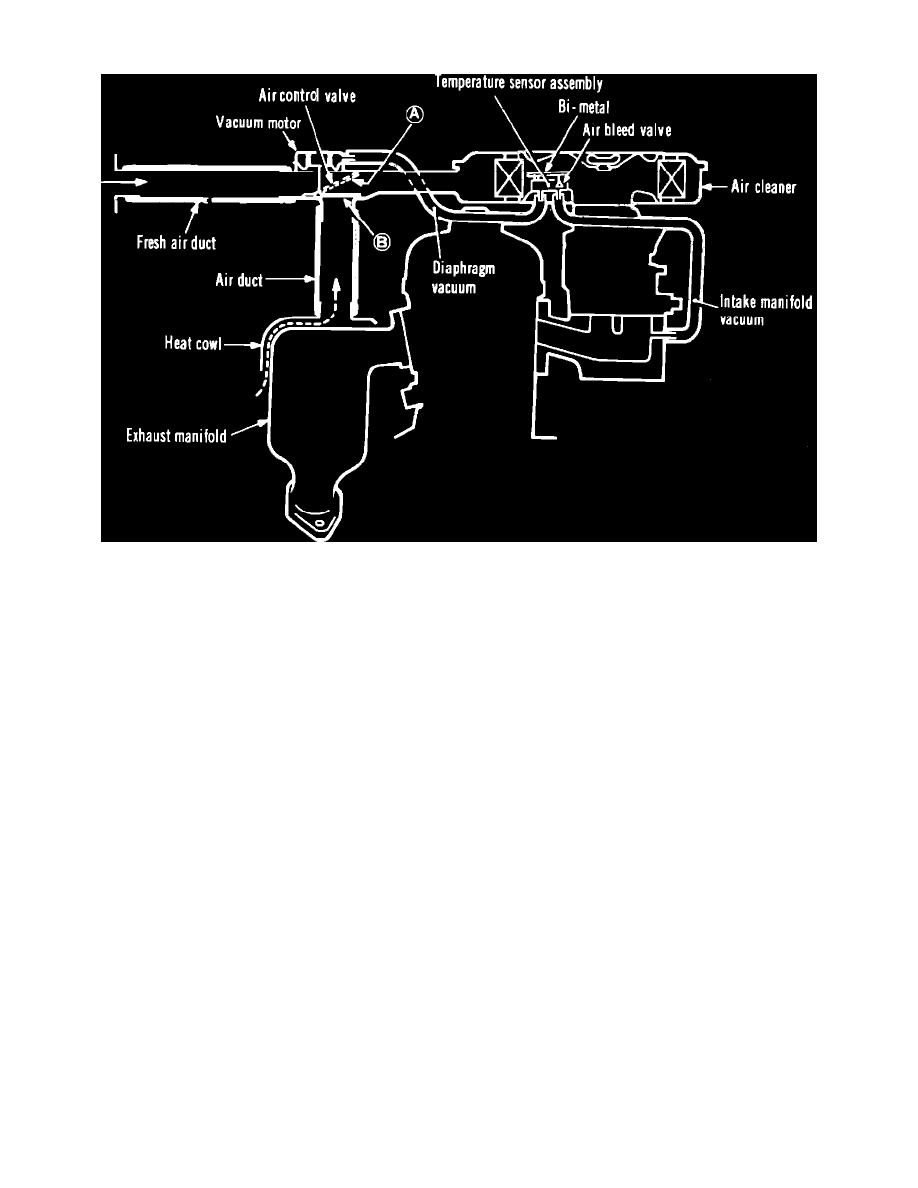D50/Ram 50 L4-1997cc 2.0L SOHC (1984)

Thermostatic Air Cleaner: Description and Operation
Fig. 3 Heated air intake (HAIS) system
DESCRIPTION
Exc. Diesel & Turbocharged Engines
In this system, Fig. 3, the hot air control valve is controlled by a vacuum motor/temperature sensor combination system which responds to intake
manifold vacuum and temperature inside the air cleaner housing. When temperature inside air cleaner is below 84 °F, air bleed valve remains
closed, forcing intake manifold vacuum to be applied to diaphragm of vacuum motor which then opens air control valve and allows heated air to
enter. If air cleaner temperature is between 84 °F and 113 °F, air flow will occur through both hot and cold air circuits. When air cleaner
temperature is above 113 °F, the air bleed valve is fully opened, causing air control valve to close fully regardless of intake manifold vacuum,
thereby allowing only cold air to flow.
VACUUM SYSTEM TESTING
1. Check that heat cowl to air cleaner and all vacuum hoses are properly attached and in good condition.
2. With cold engine and ambient temperature of less than 84 °F, air control valve should be in up position.
3. With engine warmed up and running, check temperature of air entering air cleaner. When air temperature exceeds 113 °F, the air control valve
should be in down position.
4. Remove air cleaner from engine and allow to cool down to under 84 °F. Apply 15 in.Hg (380 mmHg) vacuum to sensor and check that valve is in
up position. If valve does not rise, check vacuum motor for proper operation.
5. To test vacuum motor, apply 10 in.Hg (250 mmHg) of vacuum using tool C-4207 or equivalent. Valve should be in full up position. If vacuum
motor fails to operate properly, replace air cleaner housing assembly.
